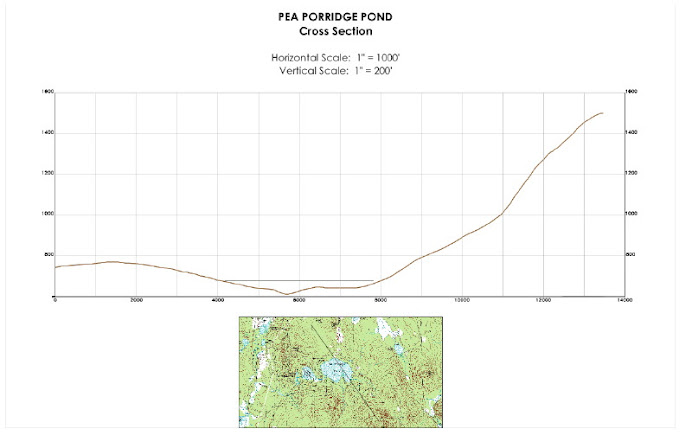LATEST PROJECT NEWS
First, the MPEP Team has been invited, both formally and informally, to present papers regarding its work to date at the Annual Meeting of the Northeastern Section of the Geological Society of America this coming March in Portland, Maine. These invitations are the result of the scientific interest our project is generating in the post-glacial geologic and paleolimnological communities of the northeastern U.S. and adjacent Canada during the past year. This is an important opportunity for us to present and discuss our current findings with others active in the same scientific fields, and we're excited to be a part of such a process. The abstracts for each presentation can be found by clicking on the following link icon:
 |
| Abstracts |
As you already know, we obtained a new basal carbon-14 date for the bottom of the Pond that shows when the influences of the last glacial ice left the basin (~14,000 calendar years ago; see earlier Post). Since that time, we've analyzed the bottom 6 core samples (6 more to go), and have established that while the temperature of the Pond's water varied somewhat from time to time, the organic content of the sediments increased fairly steadily after the Pond was de-iced up to about 9,660 calendar years ago. At that point, something unusual occurred here, and right now we don't know precisely what.
Near the top of core sample T-7, we found two +/- 1 inch-thick light tan to yellow colored bands about 2 inches apart within the otherwise dark greenish brown to black sediment. These were the first such variations we found up to that point in the otherwise consistent sedimentation shown in the cores, and we immediately determined that they must represent some significant change in the environment around the point in time. We initially thought, based on what we estimated the likely rate of sedimentation in the Pond basin to be, that these bands might be the local representation of an important global cooling event that occurred 8,200 calendar years ago. If it did, it would be a very significant finding.
Accordingly, we carefully sampled each band to check their organic content, the relative temperature of the water at the time (from the species of chironomids present in the band's sediment), and their age via a sample for carbon-14 (AMS) dating taken from the regular sediment in the area between the two bands. The date came out at ~ 9,660 calendar years - too old for the bands to be related to the 8,200-year cooling event, but the organic content and the relative temperature of the water both drop significantly within each band. Thus, the bands do represent two significant cooling events of perhaps 100-years each with a break of maybe 150-200 years in between. We've tried to specifically relate the date of these bands with other known climatic cooling events, but have so far been unsuccessful.
Microscopic observation of the contents of the sediment within the bands after all organic material has been removed show they are composed of a combination of millions of siliceous diatom remains intermixed with a generally light-tan to yellow, but in some places orangey and pinkish residue that survived the high heat of the organic removal process with its various colors intact. We don't yet know what this residue is composed of, but we've sent samples out for geochemical analysis. When we get the results and combine them with the pollen analyses that are to begin soon on all the cores, we should be able to determine what these unusual sediments indicate about climate changes in the Pond basin back about 9,600 years ago.
We, of course, will keep you posted here on the blog in the next few weeks. Meantime, if you have comments or questions, please contact us by commenting here on the blog (instruction for doing so on the homepage). So far, very few folks have chosen to comment, but please do. It's easy, and it will be great to hear what you think the bands may represent about our Pond "back in "The 96-Hundreds".


